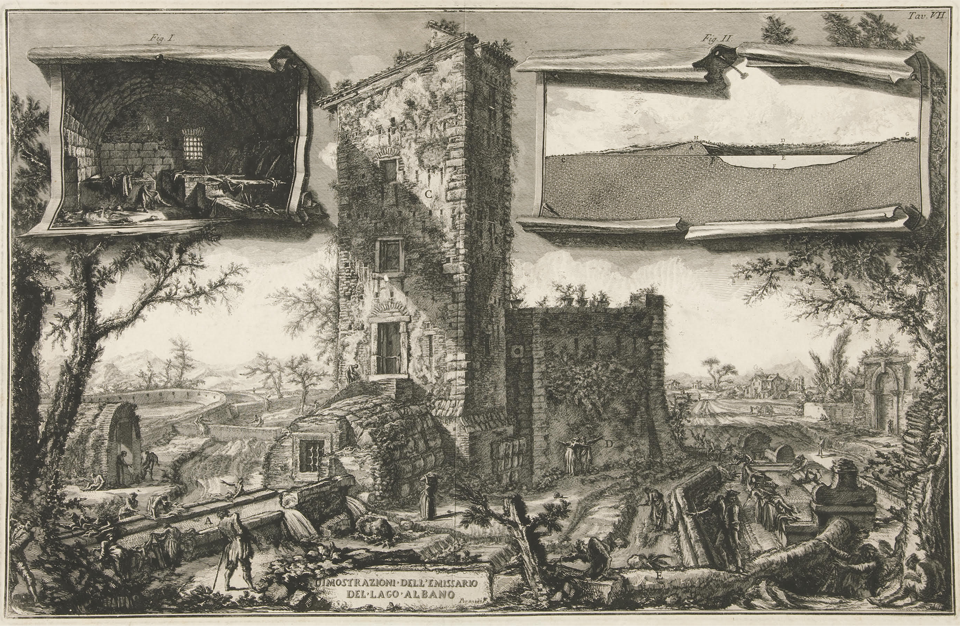Giovanni Battista Piranesi
(Italian, 1720–1778)
“Illustrations of the Emissarium of Lake Albano,”
VII from Descrizione e Disegno dell'Emissario del Lago Albano, 1762-64
Etching
Gift of Margaret and Frank Robinson
This collage of images of Lake Albano, located southeast of Rome, shows various pieces of the tunnel and channel (called an emissarium) built to control the depth of the lake formed from a volcanic crater. Crater lakes typically have no outlet, so building drainage tunnels was common to control their height.
The upper right corner (Fig II) shows a cross section of Lake Albano, which is approximately 560 feet deep and about 2.2 miles long and 1.4 miles wide. The upper left corner (Fig I) seems to be an interior view of a room in the principal image. They appear to be washing or dyeing cloth. The purpose of the large tower dominating the main image is unclear. Perhaps used to view the lake, it is not known when it was built and seems not to exist today. In the lower left, water flows from the lake in a spillway or sluice toward the tower and exits to be used in various ways such as irrigation, holding pools and so on.
Ancient Romans are credited with building the emissarium. Reportedly, water from Lake Albano surged over surrounding hills in 406 BC, destroying fields and crops. The rain required to cause this flood would have been enormous, even with the largest of rain storms. One theory suggests that the crater bottom contained trapped gases from the original volcano that pushed water over the banks into the surrounding hills. Eleven years later (ca. 395 BC), Romans built a tunnel to control the depth of the water, suggesting the considerable fear of the flood happening again. Over 30,000 men removed around 4,000 cubic yards of dirt and rock in order to build the tunnel.
Search the database
To find objects in our permanent collection, search our database here.
